The following funding programs are actively awarding grants or awards as of April, 2025.
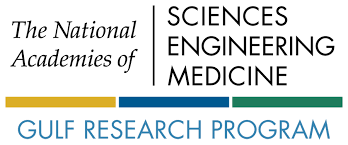
Description
The purpose of the GRP is “to advance oil system safety and the protection of human health and the environment in the Gulf of Mexico and other U.S. outer continental shelf areas.” Given the 30 year window of this funding program, GRP will focus on tackling large, complex issues at a regional scale and over the long term. (From: Gulf Research Program: A Strategic Vision (2014)). The money for this program comes from criminal settlement penalties paid by BP and Transocean.
Themes
- Foster innovative improvements to safety technologies, safety culture, and environmental protection systems associated with offshore oil and gas development.
- Improve understanding of the connections between human health and the environment to support the development of healthy and resilient Gulf communities.
- Advance understanding of the Gulf of Mexico region as a dynamic system with complex, interconnecting human and environmental systems, functions, and processes to inform the protection and restoration of ecosystem services.
Leveraged Funds
- This program does not include leverage funds with grant awards.
Quick Info
- Controlling Documents: Guilty Plea Agreement between BP and U.S. Department of Justice
- Program Plan: Gulf Research Program: A Strategic Vision
- Total Amount: $500 million
- In the DWHPT: Filter the dashboard by Funding Program to see the most current program summaries.
- Program Length: 30 years, from 2013 to 2043. Project selection will start in 2015.
- Target Locations: Gulf of Mexico and other U.S. outer continental shelf areas
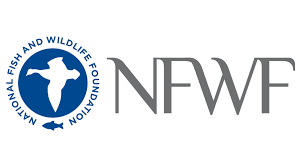
Description
The Gulf Environment Benefit Fund (GEBF) was created in 2013 to fund projects that benefit the natural resources of the Gulf Coast that were affected by the Deepwater Horizon oil spill. (From NFWF – Gulf Environmental Benefit Fund) The funds directed into the GEBF are the result of two criminal settlements with BP and Transocean.
Priorities
In Louisiana:
- GEBF funds are restricted to barrier island restoration and river diversion projects contained in the State’s Coastal Master Plan.
In Alabama, Florida, Mississippi, and Texas:
- Restore and maintain the ecological functions of landscape-scale coastal habitats, including barrier islands, beaches and coastal marshes, and ensure their viability and resilience against existing and future threats;
- Restore and maintain the ecological integrity of priority coastal bays and estuaries; and
- Replenish and protect living resources including oysters, red snapper and other reef fish, Gulf Coast bird populations, sea turtles and marine mammals.
Leveraged Funds
GEBF does not require matching funds nor is co-funding or leverage a specific criteria for project selection. However, if a recipient has referenced a specific amount of external funding for their project in their full proposal, this figure is included within the applicable project summary and tracked at the project level as leveraged funding. These leveraged funds are also reported on the DWH project tracker. Additionally, GEBF tracks other leverage or complimentary funding at the state and program-wide level on the NFWF website. This type of tracked external funding includes additional funds from other sources that are used to co-fund a project budget, support related activities such as monitoring or habitat stewardship, or otherwise support projects that contribute to achieving the same landscape-scale outcomes as GEBF-funded projects.
Quick Info
- Controlling Documents: Guilty Plea Agreement between BP and U.S. Department of Justice, Guilty Plea Agreement between Transocean and U.S. Department of Justice
- Total Amount: $2.544 billion from BP and Transocean
- In the DWHPT: Filter the dashboard by Funding Program to see the most current program summaries.
- Program Length: Payments to NFWF will be received from 2013 – 2018; program will remain active until all funds are expended.
- Target Locations: The five Gulf States: Louisiana, Mississippi, Alabama, Texas, and Florida.
- Project Selection Process: Projects are solicited through State-managed websites. Projects are selected by NFWF after consultation with the Gulf States, the U.S. Fish and Wildlife Service, and the National Oceanic and Atmospheric Administration.

Description
When an oil spill occurs in the United States, natural resource trustees employ the Natural Resources Damage Assessment (NRDA) process to identify injured natural resources and lost recreational uses, and to decide how best to restore or compensate for them. NRDA’s scientific studies and all other legal processes can take years to complete, especially after a large disaster like the Deepwater Horizon oil spill. While the DWH NRD was in progress, NRDA Trustees and BP agreed to an Early Restoration process for the Deepwater Horizon oil spill beginning in April 2011, which allowed the Trustees to begin restoration of the spill’s impacts before the full NRDA process was complete. The Trustees reached a final settlement with BP on April 4, 2016 to resolve BP’s liability for natural resource injuries from the Deepwater Horizon oil spill. Under this settlement, BP is funding the NRDA settlement that includes up to $8.8 billion, distributed in annual payments to the Trustee Implementation Groups over the course of 15 years. The Trustees are developing additional restoration projects and plans to accomplish the significant work needed for the Gulf. Development of these projects is guided by the programmatic restoration plan.
Early Restoration Framework Criteria
Projects are selected based on criteria included in the Early Restoration Agreement with BP, the Oil Pollution Act of 1990, and additional practical considerations. The Early Restoration Agreement with BP requires that projects:
- Contribute to making the environment and the public whole by restoring, rehabilitating, replacing, or acquiring the equivalent of natural resources or services injured as a result of the Spill, or compensating for interim losses resulting from the incident;
- Address one or more specific injuries to natural resources or services associated with the incident;
- Seek to restore natural resources, habitats, or natural resource services of the same type, quality, and of comparable ecological and/or human-use value to compensate for identified resource and service losses resulting from the incident;
- Are consistent with the anticipated long-term restoration needs and anticipated final restoration plan; and
- Are feasible and cost-effective.
Leveraged Funds
- This program does not include leverage funds with grant awards.
Quick Info
- Controlling Document: Consent Decree Among BPXP, the United States of America, and the States of Alabama, Florida, Louisiana, Mississippi, and Texas
- Program Plan: Final Programmatic Damage Assessment and Restoration Plan and Programmatic Environmental Impact Statement (PDARP/PEIS)
- Total Amount: BP will provide $8.8 billion over 15 years.
- In the DWHPT: Filter the dashboard by Funding Program to see the most current program summaries.
- Program Length: From April 2011 until all funded projects are complete.
- Target Locations: The Gulf region, including near-shore and offshore areas injured by the spill, and other regions with ecosystems related to the injured resources.
- Project Selection Process:Project ideas may be submitted online at NOAA’s Gulf Spill Restoration Project Submission Portal or other Trustee avenues. NRDA Trustees evaluate the submitted projects based on criteria described in the PDARP. The NRDA Trustees then release draft restoration plans for public review and comment before finalizing the chosen projects.

Description
The North American Wetlands Conservation Act of 1989 “provides matching grants to organizations and individuals who have developed partnerships to carry out wetlands conservation projects in the United States, Canada, and Mexico for the benefit of wetlands-associated migratory birds and other wildlife.” (From: US FWS Gulf Restoration: NAWCA) This fund is the result of a criminal fine due to one misdemeanor count (Count Thirteen) of violating the Migratory Bird Treaty Act (MBTA).
Priorities
Funds will be used for wetlands restoration and conservation located in states bordering the Gulf of Mexico or for projects designed to benefit migratory bird species and other wildlife affected by the Deepwater Horizon oil spill.
Leveraged Funds
This program divides leveraged funding into two categories: match and
non-match. Matching funds are required for this program and are reported on the tracker as leveraged funds. Non-match funds are not always included in NAWCA projects, but they are, then they must be “pooled” with grant and/or match funds to accomplish eligible activities and reported as leveraged funds. Click here for more information on match/no match.
Quick Info
- Controlling Document: Guilty Plea Agreement between BP and U.S. Department of Justice
- Total Amount: $100 million from BP.
- In the DWHPT: Filter the dashboard by Funding Program to see the most current program summaries.
- Program Length: BP will pay into the fund for five years, from 2014 – 2018.
- Target Locations: Florida, Alabama, Mississippi, Louisiana, and Texas, as well as locations that benefit affected habitats and migratory species in the United States, Canada, and Mexico.
- Project Selection Process: Grant submissions are evaluated by the Division of Bird Habitat Conservation within the U.S. Fish and Wildlife Service, selected by the North American Wetlands Conservation Council, and approved by the Migratory Bird Conservation Commission.
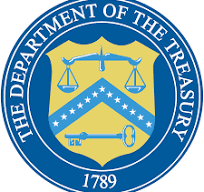
Description
The Direct Component of the RESTORE Act is administered by the U.S. Department of Treasury and is comprised of thirty-five percent of the annual amount available in the Gulf Restoration Trust Fund, to be shared equally among the Gulf Coast States for expenditure on ecological and economic restoration. (From: The RESTORE Act (H. R. 4348—186))
Eligible Activities in the Gulf Coast Region
- Restoration and protection of the natural resources, ecosystems, fisheries, marine and wildlife habitats, beaches, and coastal wetlands of the Gulf Coast region.
- Mitigation of damage to fish, wildlife, and natural resources.
- Implementation of a federally approved marine, coastal, or comprehensive conservation management plan, including fisheries monitoring.
- Workforce development and job creation.
- Improvements to or on State parks located in coastal areas affected by the Deepwater Horizon oil spill.
- Infrastructure projects benefiting the economy or ecological resources, including port infrastructure.
- Planning assistance.
- Administrative costs.
- Promotion of tourism in the Gulf Coast Region, including recreational fishing.
- Promotion of the consumption of seafood harvested from the Gulf Coast Region.
Leveraged Funds
This program reports “Known Leveraged Funding” as those funds not originating from RESTORE Bucket 1 (Direct Component) that are included in the grant award as necessary to complete the grant scope of work. These funds may include other federal sources when Treasury RESTORE funds are used as the non-Federal share on another Federally-funded project. Leverage may also come from non-Federal funds, which can be state or local matching funds.
Quick Info
- Controlling Document: The RESTORE Act
- Total Amount: The final amount is currently unknown. $800 million plus penalty interest in Clean Water Act Penalties paid by Transocean was deposited to the Gulf Coast Restoration Trust Fund. However, the final amounts to be paid by BP and Anadarko are still to be determined.
- Program Length: Until the trust fund is depleted.
- Target Locations: The Gulf Coast Region, as defined by the RESTORE Act and the Department of Treasury’s regulation, 31 CFR Part 34.
- Project Selection Process: Grants are administered by State, County, and Parish entities, who submit plans to the U.S. Department of Treasury for eligibility and completeness reviews.
More Information
- The U.S. Treasury’s RESTORE Act Site
- Alabama Gulf Coast Recovery Council
- Florida Department of Environmental Protection – About RESTORE Act
- Florida Association of Counties – Gulf Consortium
- Louisiana’s Coastal Protection and Restoration Authority
- Mississippi Department of Environmental Quality – Making Mississippi Whole
- RESTORE The Texas Coast
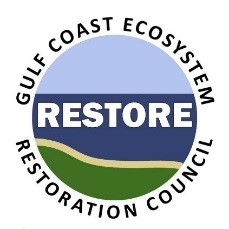
Description
The RESTORE Council administers 60 percent of the funds made available from the Gulf Coast Restoration Trust Fund. Thirty percent plus interest is administered by the Council for ecosystem restoration and protection under the RESTORE Council’s Comprehensive Plan (“Bucket 2”) and the other thirty percent is allocated among the five Gulf Coast States and spent according to individual State Expenditure Plans, which require approval of the Council (“Bucket 3”). (From: About the Gulf Coast Ecosystem Restoration Council – About Us)
Goals of the Comprehensive Plan
- Restore and Conserve Habitat.
- Restore Water Quality.
- Replenish and Protect Living Coastal and Marine Resources.
- Enhance Community Resilience.
- Restore and Revitalize the Gulf Economy.
Leveraged Funds
- This program reports leveraged funding documented by applicants as dollars necessary to accomplish the objectives of the restoration project or dollars that complement the investment of federal assistance provided by the Council from the Council Selected Restoration Component or the Spill Impact Component of the RESTORE Act. The leveraged funding is used to document complimentary investments to either achieve a common or functionally related restoration objective or that builds upon a sequence of activities proposed or completed as part of other projects or programs. This funding is reported at the project level. Click here for more information on this ruling.
Quick Info
- Controlling Document: The RESTORE Act
- Program Plan: Initial Comprehensive Plan
- Total Amount: The final amount is currently unknown. $800 million plus penalty interest in Clean Water Act Penalties paid by Transocean was deposited to the Gulf Coast Restoration Trust Fund. However, the final amounts to be paid by BP and Anadarko are still to be determined.
- Program Length: Until the trust fund is depleted.
- Target Locations: The Gulf Coast Region, as defined by the RESTORE Act and the Department of Treasury’s regulation, 31 CFR Part 34.
- Project Selection Process: With respect to the Comprehensive Plan component, members of The RESTORE Council nominate funding proposals to the RESTORE Council itself. The RESTORE Council will consider all proposals and publish a draft Funded Priorities List (FPL) showing the projects and programs it intends to fund. The public will review and comment on the draft FPL. The Council will carefully consider the public comments, change the list as needed, and publish the final FPL.

Description
Under 1604 of the RESTORE Act, NOAA was directed to establish a Gulf Coast Ecosystem Restoration Science, Observations, Monitoring and Technology Program that will receive 2.5 percent of the Gulf Restoration Trust Fund, plus interest. The mission of the NOAA RESTORE Act Science Program is to “initiate and sustain an integrative, holistic understanding of the Gulf of Mexico ecosystem and support the restoration and long-term sustainability of the ecosystem, including its fish stocks, fishing industries, habitat, and wildlife through ecosystem research, observations, monitoring, and technology development.” (From: The RESTORE Act Science Program Fact Sheet)
Long-Term Research Priorities
- Increase comprehensive understanding of Gulf ecosystem services, resilience, and vulnerabilities of coupled social and ecological systems.
- Construct management-ready and accessible ecosystem models for the Gulf of Mexico.
- Improve forecasting, analysis, and modeling of climate change and weather effects on the sustainability and resiliency of Gulf ecosystems.
- Increase comprehensive understanding of watershed, sediment, and nutrient flows and impacts on coastal ecology and habitats.
- Increase comprehensive understanding of living coastal and marine resources, food web dynamics, habitat utilization, protected areas, and carbon flow.
- Analyze new and existing social and environmental data to develop long-term trend and variability information on the status and health of ecosystems, including humans.
- Develop, identify, and validate system-wide indicators of Gulf Coast environmental and socioeconomic conditions.
- Obtain information and develop decision support tools needed to monitor and adaptively manage habitat, living marine resources, and wildlife.
- Network and integrate existing and planned data/information from Gulf monitoring programs.
- Develop and implement advanced engineering, physical, chemical, biological, and socioeconomic technologies to improve monitoring.
Leveraged Funds
This program reports leveraged funds as direct funding from an entity other than the Science Program directed towards current Science Program investments or activities and is counted in the fiscal year the award was made. This funding can be in the form of dollars or in-kind contributions to which a dollar value can be readily assigned. For example salary and benefits, use of equipment or a facility and match to obtain additional funding or support for activities connected to Science Program funded activities are all leveraged funding.
Quick Info
- Controlling Document: The RESTORE Act
- Program Plan: NOAA RESTORE Act Science Program Science Plan
- Total Amount: The final amount is currently unknown. $800 million plus penalty interest in Clean Water Act Penalties paid by Transocean was deposited to the Gulf Coast Restoration Trust Fund. However, the final amounts to be paid by BP and Anadarko are still to be determined.
- Program Length: Until the trust fund is depleted.
- Target Locations: The Gulf Coast Region, as defined by the RESTORE Act and the Department of Treasury’s regulation, 31 CFR Part 34. NOAA’s research projects will focus on studying The Gulf of Mexico Large Marine Ecosystem, with an emphasis on marine and estuarine environments.
- Project Selection Process: NOAA will administer competitively-selected grants to fulfill the objectives of the Program.
Description
Under 1605 of the RESTORE Act, each Gulf Coast State will establish a Center of Excellence to conduct research focused on science, technology, and monitoring in at least one of the eligible disciplines. Collectively, the Centers of Excellence will receive 2.5 percent of the Gulf Restoration Trust Funds, plus interest. (From: The RESTORE Act (H. R. 4348—201))
The Five Eligible Science Disciplines
- Coastal and deltaic sustainability, restoration, and protection, including solutions and technology that allow citizens to live in a safe and sustainable manner in a coastal delta in the Gulf region.
- Coastal fisheries and wildlife ecosystem research and monitoring in the Gulf Coast region
- Offshore energy development, including research and technology, to improve the sustainable and safe development of energy resources in the Gulf of Mexico.
- Sustainable and resilient growth, economic and commercial development in the Gulf Coast region.
- Comprehensive observation, monitoring, and mapping.
Quick Info
- Controlling Document: The RESTORE Act
- Total Amount: The final amount is currently unknown. $800 million plus penalty interest in Clean Water Act Penalties paid by Transocean was deposited to the Gulf Coast Restoration Trust Fund. However, the final amounts to be paid by BP and Anadarko are still to be determined.
- Program Length: Until the trust fund is depleted.
- Target Locations: The Gulf Coast Region, as defined by the RESTORE Act and the Department of Treasury’s regulation, 31 CFR Part 34.
- Project Selection Process: Established Centers of Excellence in each Gulf Coast State will administer competitively-selected research grants.
Entities that are Eligible to Administer Center of Excellence Funds:
- Alabama: Alabama Gulf Coast Recovery Council, or such administrative agent as it may designate
- Florida: Florida Institute of Oceanography
- Louisiana: Coastal Protection and Restoration Authority of Louisiana
- Mississippi: Mississippi Department of Environmental Quality
- Texas: Texas Commission on Environmental Quality
Leveraged Funds
- This program does not include leverage funds with grant awards.
Go to the U.S. Department of the Treasury’s Centers of Excellence Research Grant Program Page
The following funding programs are not longer actively awarding grants or awards.
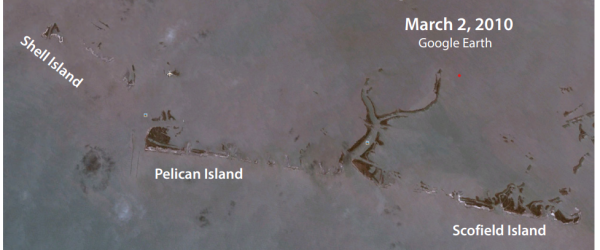
This project began in 2010 when emergency money was allocated by BP to build up berms along the Louisiana coast line in an effort to block oil from the Deepwater Horizon Oil Spill. Since then, the Louisiana Coastal Protection and Restoration Authority (CPRA) has been “taking advantage of that foundation of sand to build more-substantial and sustainable barrier islands that can serve as a first line of defense against storm surge and ecosystem degradation.” (From CPRA: Coastal Programs)
Goals
- Build sand berms to act as an initial response to contain the flow of oil to the Louisiana coast.
- Re-construct barrier islands on initial berms to protect the Louisiana coast using dredged materials.
- Fortify berms to advance coastal restoration.
Leveraged Funds
- No known leveraged funds.
Quick Info
- Controlling Document: Unknown
- Total Amount: Roughly $328,400,000
- In the DWHPT: 2 projects, $108,400,000 DWH Funds
- Program Length: 2011 – 2014
- Target Locations: Scofield and Shell Islands off the coast of Louisiana.
- Project Selection Process: Consultation between the State of Louisiana, BP, Army Corps of Engineers, and oil spill trustees.
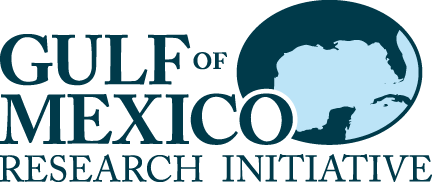
GoMRI was created to fund research that “improves society’s ability to understand, respond to and mitigate the impacts of petroleum pollution and related stressors of the marine and coastal ecosystems, with an emphasis on conditions found in the Gulf of America. Knowledge accrued was to be applied to restoration and to improving the long-term environmental health of the Gulf of America.” The GoMRI funds were the result of an independent, voluntary initiative sponsored by BP and are not related to any litigation, fines, or penalties resulting from the oil spill. (From: About GoMRI – GoMRI History)
Research Themes
- Physical distribution, dispersion and dilution of petroleum, its constituents and any dispersants applied, under the action of physical oceanographic processes, air-sea interactions and tropical storms.
- Chemical evolution and biological degradation of the petroleum/dispersant systems and subsequent interaction with coastal, open-ocean, and deep-water ecosystems.
- Environmental effects of the petroleum/dispersant system on the sea floor, water column, coastal waters, beach sediments, wetlands, marshes, and organisms; and the science of ecosystem recovery.
- Technology developments for improved response, mitigation, detection, characterization, and remediation associated with oil spills and gas releases.
- Impact of oil spills on public health including behavioral, socioeconomic, environmental risk assessment, community capacity and other population health considerations and issues.
Leveraged Funds
- This program did not include leverage funds with grant awards.
Quick Info
- Controlling Document: Master Research Agreement
- Total Amount: $500 million from BP
- In the DWHPT: 267 projects, $390,644,596 DWH Funds
- Program Length: 10 years, from 2010 – 2020
- Target Location: Gulf of America, funding was applied to relevant research at institutions around the globe
- Project Selection Process: Projects were selected by an independent research board; awards were made every three years.
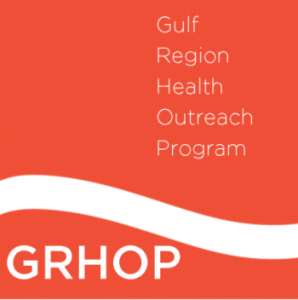
Description
The Gulf Region Health Outreach Program (GRHOP) was a series of integrated, five-year projects designed to expand capacity for and access to high quality, sustainable, community-based healthcare services, including primary care, behavioral and mental care, and environmental medicine, in Gulf Coast communities of Louisiana, Mississippi, Alabama, and the Florida Panhandle. The GRHOP was comprised of four projects: the Primary Care Capacity Project, the Mental and Behavioral Health Capacity Project, the Environmental Health Capacity and Literacy Project, and the Community Health Workers Training Project. The GRHOP also incorporated a Community Involvement project that coordinated community involvement within and across all GRHOP projects.
Goals
The ultimate goal of the GRHOP was to inform residents of the targeted communities about their own health and provide access, now and in the future, to skilled frontline healthcare providers supported by networks of specialists knowledgeable in addressing physical, environmental, behavioral and mental health needs, thereby improving the resilience of the targeted communities to future health challenges.
The program consisted of four projects to:
- build the capacity of primary care community health clinics in the region,
- increase the mental and behavioral health expertise of health professionals in the targeted communities and increase awareness by local communities of mental and behavioral health issues,
- increase the environmental health expertise of health professionals in the targeted communities and health literacy of local communities, and
- train community health workers who will help residents navigate the healthcare system and access needed care.
The GRHOP also incorporated a Community Involvement project that oversaw community outreach and worked in cooperation with project leaders to coordinate community involvement within and across all GRHOP projects.
Leveraged Funds
- No known leveraged funds.
Quick Info
- Controlling Document: Medical Benefits Class Action Settlement
- Total Amount: $105 million from BP
- In the DWHPT: 8 Projects, $105,700,000 in DWH Funds
- Program Length: 5 years, from 2012 to 2017
- Target Location: 17 coastal counties and parishes in Alabama (Mobile, Baldwin), Florida (Escambia, Santa Rosa, Walton, Okaloosa, Bay), Louisiana (Orleans, Jefferson, St. Bernard, Plaquemines, Lafourche, Terrebonne, Cameron) and Mississippi (Hancock, Harrison, Jackson).
- Project Selection Process: The GRHOP was developed jointly by BP and the Plaintiffs’ Steering Committee as part of the Deepwater Horizon Medical Benefits Class Action Settlement, which was approved by the U.S. District Court in New Orleans.
Description
The funds for these environmentally beneficial projects were agreed upon when MOEX and the United States settled civil claims that resulted from the Deepwater Horizon oil spill. The purpose of the SEPs was to “facilitate land acquisition projects that will preserve and protect in perpetuity habitat and resources important to water quality and other environmental features of the Gulf of Mexico region.” (From: The U.S. Department of Justice, Justice News, 2/17/2012)
Priorities
- Coastal Land Conservation and Protection.
- Environmental Compliance.
Leveraged Funds
- No known leveraged funds.
Quick Info
- Controlling Document: Consent Decree Between The United States and MOEX Offshore 2007 LLC
- Total Amount: $20 million by MOEX
- In the DWHPT: 6 projects, $19,655,680 DWH Funds, $3,012,675 leveraged funds
- Program Length: Two years, from June 18, 2012 until June 18, 2014.
- Target Locations: Florida, Louisiana, Mississippi, and Texas
- Project Selection Process: MOEX worked directly with the State agencies and the U.S. Department of Justice to select appropriate projects that satisfied the priorities of the settlement agreement.
Go to The Environmental Law Institute’s description of the MOEX Settlement
Description
MOEX Offshore agreed to pay $70 million in civil penalties in order to settle its civil liability from the Deepwater Horizion oil spill. Of these funds, $45 million will be added to the Oil Spill Liability Trust Fund, and $25 million will go to the Gulf States that participated in the settlement.
Priorities
- Environmental Compliance
- Specific actions are dependent on the State entity receiving the funds.
Leveraged Funds
- No known leveraged funds.
Quick Info
- Controlling Document: Consent Decree Between The United States and MOEX Offshore 2007 LLC
- Total Amount: $70 million by MOEX
- In the DWHPT: 8 projects, $10,862,126 DWH Funds, $8,062,247 leveraged funds
- Program Length: 2012 until funds are depleted.
- Target Locations:
- $45 million to the United States Oil Spill Liability Trust Fund.
- $6.75 million to the Louisiana Department of Environmental Quality’s Hazardous Waste Site Cleanup Fund.
- $5 million set aside for Alabama in the event that they drop their claims against the company.
- $5 million to Florida State Department of Enviromental Protection for stormwater management projects.
- $5 million to the Mississippi Department of Environmental Quality’s Pollution Emergency Fund.
- $3.25 million to Texas’ General Revenue Fund and the Coastal Protection Fund.
Go to The Environmental Law Institute’s description of the MOEX Settlement
Description
BP’s share of net revenue from oil recovered from the Deepwater Horizon site. The fund received $22 million in voluntary contributions from BP to support species at risk from the Gulf oil spill, like waterfowl, shorebirds, marsh birds, oysters, fin fish and sea turtles.
Priorities
- Immediate actions to protect species most at risk from the Gulf oil spill.
Leveraged Funds
- Funds leverages for several projects.
Quick Info
- Controlling Document: Unknown
- Total Amount: $22 million from BP
- In the DWHPT: 48 projects, $18,205,821 in DWH Funds
- Program Length: 2010 – unknown.